Didactic education: The modern past
The bell has just rung and the children begin to file into the classroom, thirty or so of them. ‘Quietly.’ says the teacher, as they make their way to their places. Watching over the scene, she stands beside her desk on a small platform at the front of the room.
The children’s desks are in straight rows, bolted to the floor. They all sit and face the teacher, and the teacher surveys the little sea of faces, eye to eye, one to all and all to one. The walls are bare except for some lettering charts and a map supplied by the Department of Education.
‘Sit up straight, children. Be quiet. Open your grammar textbooks at page ...’
Such a scene has been the oft-repeated experience of children since the advent of mass, institutionalised education. Some children have cried inconsolably at the first sight of school, later reconciling themselves to its structures and strictures. Others have reacted to the peculiar goings-on of the classroom with a mixture of fear and anger and irony. They have daydreamed of better things. They have made their own mark on the place by carving their name into the desk. They have ‘mucked up’.
‘Today we are doing ... nouns and verbs.’
The door is closed. This is the teacher’s private space, her own fiefdom. ‘My classroom,’ she says. ‘Our teacher,’ say the students, in deference to her authority.
‘A noun is a naming word. A verb is a doing word.’
She writes this neatly on the board, under the date. This is the lesson for the day.
‘Now, let’s all say this together,’ she says.
‘A noun is a naming word. A verb is a doing word.’
The class recites in unison, in that funny singsong lilt children seem to have invented just for teachers. The kids who are mucking up can be sure the lilt is sarcasm. The others are just sweetly singing what they imagine must be the teacher’s tune.
‘Harry, give me an example of a verb.’
Harry recoils in horror. He had chanted the chant but his mind was elsewhere, hoping that the law of one in thirty would spare him cross-examination just one more time. But it hasn’t, and his number’s up.
‘Umm ... I don’t know an example’, he splutters, ‘... Miss.’
Inwardly, he fears, ‘she’ll fail me’, and ‘the other kids will think
I’m dumb.’ ‘Then can somebody else give me an example of a verb?’
Judy shoots up her hand.
‘Yes, Judy.’
‘Run is a verb. The fox runs. Runs is what the fox is doing,’ she says in triumph.
Judy’s good at the game of schooling and plays to win.
‘Yes. Well done, Judy.’
Such is her momentary victory, a manifest triumph of one over thirty. Judy doesn’t
need to know what verbs are going to do in her life. It’s the moment of symbolic victory that matters.
And so the class continues.
This kind of teaching we call ‘didactic’, a word that finds its way into English from the Greek ‘to teach’. At times, it still has a relatively neutral meaning, when one speaks of teaching methods – ‘foreign-language didactics’ or ‘music didactics’.
In English, however, its meaning has also come to have a particular loading. Being didactic means to spell things out explicitly but perhaps a little too laboriously, or to present a view of what seems true or right or proper, but in a way that at times sounds dogmatic. So, the teacher tells and the learner listens. Didactic teaching turns on what the teacher says rather than what the learner does. The balance of agency weighs heavily towards the teacher’s side. The teacher is in command of knowledge. Their mission is to transmit this knowledge to learners, and learners, it is hoped, dutifully absorb the knowledge laid before them by the teacher. ‘Didactic’ implies a heavy-handed ‘teacherliness’.
Not that this is always a bad thing. In fact, being explicit can be an effective way of teaching. There are often times when clear instructions from the teacher remove ambiguity and provide a useful way forward for a learner.
Didactic education was, until the recent past, the dominant educational experience for the majority of school students. In fact, it remains dominant today in many places. Modern, mass, institutionalised education is only now reaching the poorest parts of the world. When school finally does arrive in these places, its primary mode in the first instance is likely to be didactic, usually because of limited resources and teacher training. And even in those places in which modern, mass, institutionalised education has been around for a long time, didactic education lives on. We would hazard a guess that most classrooms in the world today operate more or less in the didactic mode for a fair proportion of the school day. Maybe the desks have been unbolted from the floor and some of the children’s work has been displayed on the wall – small concessions to a newer way of learning – but teachers in many of today’s schools still perform to the script of didactic teaching.
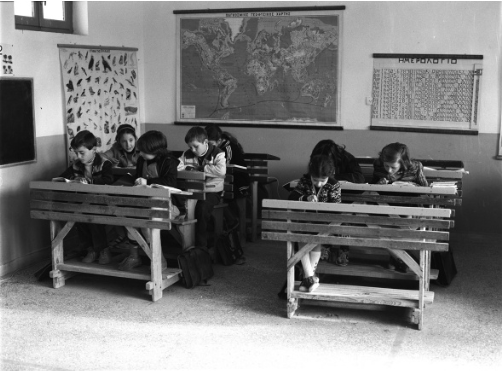
At its worst, didactic teaching is dreadfully predictable and deadeningly banal. However, even in New Learning contexts, the didactic mode may sometimes have a place – in certain places and for certain moments, at least. That moment might be when a learner enters a well-established and authoritative area of knowledge unfamiliar to them. When you’re beginning quantum mechanics, there’s no point in trying to argue with it. It’s best to listen to the teacher, at least until you get your head around it. Didactic teaching may also have its place in communities that require particular forms of reverence – doctrinal readings of religious texts, for instance. In order to be a person of manifest faith in such settings, you may have to absorb the messages presented by the text, not question them. Or didactic education may be a useful method at certain moments for dealing with particular subject matters – learning by rote vocabulary items of a foreign language, the periodic table of elements, or mathematical formulae, for instance. Or it may be a stamp of integrity, reflecting the values of a school that prides itself on a certain kind of rigour and discipline, where teachers get straight to the point and deliver directly to the tests that supply credentials for conventional success. This may work. Or at least it might be seen to work by anxious parents. In other words, didactic teaching may be a part of the practical world of New Learning, a world of varied approaches to teaching, diverse learning styles and cultural pluralism.
To analyse the nature and form of didactic education, we will examine eight dimensions:
- dimension 1: Architectonic meanings are those expressed by a physical setting, the spatial designs that shape the way people relate to each other.
- dimension 2: Discursive meanings are expressed through the patterns of person- to-person communication.
- dimension 3: Intersubjective meanings are created in the interaction of one person’s will – their interests, motivations and drives – with another’s.
- dimension 4: Socio-cultural meanings emerge from the ways in which a person’s life experiences are negotiated in a particular setting.
- dimension 5: Proprietary meanings are formed in relationships of knowledge ownership.
- dimension 6: Epistemological meanings are those arising from the ways in which knowledge is represented and created.
- dimension 7: Pedagogical meanings are the ways learners make knowledge for themselves, as designed and facilitated by teachers and curricula.
- dimension 8: Moral meanings underlie the establishment of a balance of power between those who control and those who are controlled.
These dimensions help us understand the design and form of education in a comprehensive and rounded way. Each dimension has been selected because it sheds light on a key component of the experience of teaching and learning: location and space, communication, identity and relationships, personal backgrounds, power, ways of knowing, ways of teaching and ethics, Together, the eight dimensions help us explain how education is understood, planned, delivered and experienced.
Dimension 1: Architectonic
Here we are in a physically bounded space, having divided however many children in the school into groups of thirty or so and put them into more-or-less identical boxes – their classrooms. This is an architecture created to serve a communications design. The room is big enough for this many children to listen to the teacher without the need for audio amplification, and for the teacher to be able to talk over them all when they need to be silenced. There is something about ratios in the rough range of one to 20 through to one to 40 – they seem to provide the optimum productivity of teacher– learner interaction in the traditional classroom. Any more and the class is too big to manage; any fewer and too many teachers need to be hired.
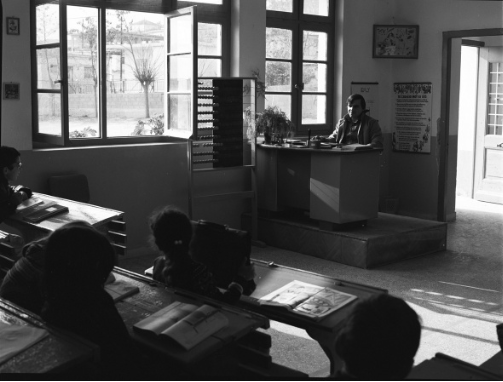
So, the teacher stands at the front of the class and the learners face the teacher. This spatial arrangement shapes the nature of interactions and the system of teaching. The desks are set up to ensure eye contact from each student to the one teacher. Student-to-student contact is in lateral vision and not to be encouraged. A student may cast a knowing glance to another kid, who may then be tempted to pursue some tangential interest, to muck up even, as an exhibition of defiance of the teacher’s authority or to entice the other student as a co-conspirator. Or a learner might look askance out of temptation to ‘copy’ another learner’s work or check where they are up to. Whatever the motive, there is an air of the forbidden in lateral views. The proper view is to look to the teacher – many to one – so their authority can be heeded – one to many. The overall feeling of this classroom, the way it works for learners and the way the teacher operates, is determined to a significant degree by the way its space is configured. This is how the classroom space more or less does its educational and social job. These bounded, physical structures frame a particular set of educational and social purposes.
Dimension 2: Discursive
Teaching – and this didactic mode of teaching, in particular – is the talking profession. Teacher–learner talk, however, is an unequal exchange. The teacher starts the classroom conversation by way of exposition. ‘Today we are going to ...’, followed by a lecture in which she tells the learners what she knows and what they are supposed to know. She engages the students via question-and-answer routines. Often, they are ‘guess what’s in the teacher’s head’ routines, as strange and counter-intuitive as her hoped-for answers sometimes seem, once revealed. Only a single student can speak at the same time. ‘Put up your hands. One person at a time, please.’ Or the whole class recites in unison. ‘Say after me ...’ Or the students quietly do their work, reading or writing. Or the students take a test – in another, eerier kind of silence – in which they will do well or badly, depending on whether they have managed to figure out the tricks of the arcane game of multiple choice, or whether they have been able to second-guess what the assessing teacher wants to hear. For most of the day, even the most voluble of students sit in silence; unless, that is, they decide to break the communicative protocols of the place. ‘Shoosh, quiet please.’ ‘Talking in class’ is a phrase of approbation, and if excessive, deserving of punishment. In the corner of the room? Outside in the corridor? A trip to the headmaster’s office? Lateral peer-to-peer communication is unmanageable in a practical sense, and when it does occur, it is most likely considered to be ‘off task’. Quite simply, this classroom discourse is teacher- dominated and presented in the standard form of the national language, mostly with little or no concession to the home languages or dialects of the learners. The teacher orchestrates all conversational turn-taking, expecting the few responses that come from students to be within a narrowly prescribed range (getting the responses she expects, her ‘right’ answers).
See Winston Churchill’s School Days.
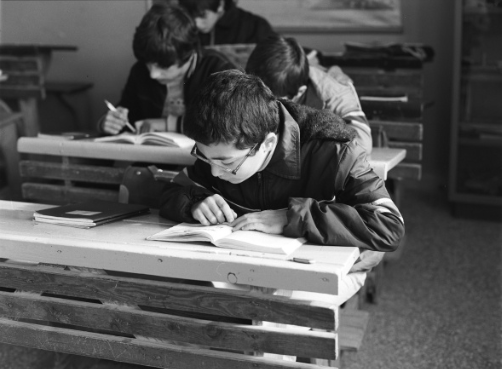
Dimension 3: Intersubjective
In the didactic educational experience, the teacher’s will must prevail. The best student is the silent, bodily constrained, undifferentiated, listening student; or the student who answers the question in the right way; or the student who doesn’t miss mouthing a word in the whole-class recitation; or the student who quietly does their work without talking to the kid beside them – surely, that can only be because they want to copy their neighbour or talk about something off task. Communication with other students is limited by the teacher’s directions. Their incentives are teacher- or school-given rewards. The teacher says, as a sign of approval, ‘Good boy, well done.’ Or the student’s reward is the good marks they might get in the end. Alternatively, there’s immediate and direct punishment for transgressing the rules of the intersubjective game, or just bad marks, and these speak for themselves.
See Yan Pho Lee’s School Days.
Dimension 4: Socio-cultural
The teacher in the didactically ordered classroom does their work as though all students’ backgrounds are the same, or can be assumed to be the same, or, with the good influence of uniform education, can be made more or less the same. The teacher talks to the middle of class, hoping that the ‘above-average’ kids will not get too bored and the ‘below-average’ kids will pick up enough to be engaged and learn something. All the students should be on the same page – literally. They should all do the same work and move ahead at the same pace. All students should cover the same content, doing the same activities in the same way and sitting for the same test at the end. And this, regardless of who they are, what they know already, what their interests are, what their motivations and aspirations are. The key to the traditional classroom is simultaneity. One-to-many is easiest if it’s one to thirty identically replicated learning experiences – doing the same thing at the same time. If the students are not the same, the least the school can do is operate on the wishful thinking that for all practical purposes they are the same. If they are not, the school can try to influence them to be the same by treating them the same, rewarding ‘good work’ and ‘right answers’. In this context, divergence from the ideal norm is seen to be deviant or to represent a deficit in some way.
See George Orwell’s School Days.
Dimension 5: Proprietary
‘My classroom,’ says the teacher, meaning a private space within which she is in control of thirty or so learners. Except for the occasional ‘inspection’ and the marks sent home to parents at the end of the year, this is a barely examined space. There are no parents, no other teachers, no students other than the thirty in her charge, no public documentation of what goes on in the classroom other than teacher grades on the student’s report card and the odd piece of work that a student may take home. And ‘my work,’ says the student. ‘No copying, please,’ says the teacher as a precaution against the learner’s collaborative instincts. ‘In your own words’ is the instruction when a student is tempted to copy a text that seems to have already struck the right chord. The student’s work is individualised and private. Each produces their assignment or completes the test for an audience of one, the assessing teacher. The main official or public trace of the student’s work is a recorded score. Thus, power is exercised by the authorised teacher, the behaviour protocols established and the forms of curriculum and assessment they impose.
See Maintaining Classroom Discipline.
Dimension 6: Epistemological
Teachers and textbooks tell students the facts, rules and theories of disciplinary knowledge. ‘Verbs are doing words.’ ‘The Normans conquered England in 1066.’ ‘The square of the length of the hypotenuse of a right-angled triangle equals the sum of the squares of the lengths of the other two sides.’ This is knowledge, pure and simple, singular and uncontroversial. It is neatly divided into ‘subjects’, disciplines that are complete in themselves and systematically arranged from what is considered to be the easier stuff, to the harder stuff. Just as neatly as it is compartmentalised by theme, each subject is placed into temporal cells in the grid arrangement of the school timetable. So, at the appointed time at each designated stage in the unfolding of a discipline, teachers present authoritatively, textbooks tell definitively, students repeat in unison. Student work regurgitates these hope- fully well-received truths, and the test is final proof of what they’ve learned and what they haven’t. Then, on to the next bit. Little or no time is left for learners to make knowledge, even to inject a perspective or idea of their own, except when their minds wander into daydreams or their pens into doodles. ‘Pay attention!’ shouts the teacher. The source of definitive knowledge is clear from the direction of knowledge lows, the origins of the written text and the writer–reader authority relations that follow – from the syllabus, to the textbook, to the teacher, to the learner. The sources of authority are people outside the sphere of learner activity, and outside the classroom. ‘Know as others say you should know,’ is the underlying message. To remove any possibility of transgression, the student’s knowledge has to be verified by the teacher’s test (measured against the teacher’s exposition and the textbook) or the external examination (measured against the system-mandated syllabus). This is a ‘transmission’ approach to knowledge. It is an approach, moreover, which assumes that definitive disciplinary knowledge can be learned once and is sufficiently durable to be learned for life. The underlying assumption is that disciplinary knowledge, and the society it serves, is relatively stable. So, when your formal education is over, you will have learned just about all you’ll need from the institutions of education. Engagement and performance are thus narrowly prescribed. The rest you can safely learn in the school of life.
See Charles Darwin’s School Days.
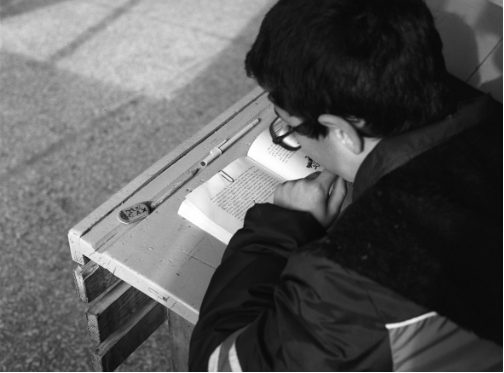
Dimension 7: Pedagogical
In the traditional classroom of mass, institutionalised education, students are receivers and absorbers of knowledge. It is presupposed that learning is memory work, absorbing facts, rules and ‘correct’ answers by rote. School knowledge is a kind of shopping list of things-to-be-known. The teacher is a didact, the mouthpiece of official knowledge. So students drill ‘times tables’, memorise spelling lists and learn by rote the facts and dates of history for regurgitation in tests. When something is actually learned, it is often because the learner has been more active than the pedagogue would care to admit. The student has, accidentally almost, connected the presented knowledge with their own identity and destiny.
See Audre Lorde’s School Days.
Dimension 8: Moral
The architectonics of classroom space, the discourse of classroom talk, the intersubjective patterns of reward and punishment, the socio-cultural dynamics of sameness, the proprietary spaces of teacher and student work, the epistemology of knowledge transmission and the pedagogy of didactic presentation – these all add up to a certain kind of moral economy. They amount to a set of practical relationships of social interchange that have a value-drenched force. It seems hard to argue with the fact that, in this particular classroom and this particular school, that’s the way things are and have to be. The moral economy of didactic education might be considered inappropriate and ineffectual today (which it certainly is at some times, in some respects, for some students), but it has always had a rhyme and reason, a practical rationale behind its design. If the underlying lesson of the didactic teaching is about the nature of knowledge (accepting received truths unquestioningly), then it was a lesson appropriate for a society that expected its workers to take the supervisor’s orders at work, its citizens to conform and its wives to obey their husbands at home. Much of the time, in fact, didactic teaching does not even achieve this. Often, and for some students more than others, its classrooms are also experienced as places of passivity, boredom and failure. However, even this makes a certain kind of sense. Perversely, perhaps, poor results at school serve as a kind of moral lesson. They happen to serve a greater good. The lessons of failure are absolutely learned if you end up in a job that is drearily unskilled, not requiring much beyond work discipline and the capacity to put up with boredom. If that’s where you end up, it must have been your own fault for not doing better at school, or so the conventional story of school results would have you believe. To live a good life is to know your place in the world, and school will help tell you this. This type of moral economy worked perfectly well for a society in which learners were destined to belong to traditional workplaces requiring deference to authority and whose skill requirements were minimal, predictable and stable. It was well suited to the creation of homogeneous and submissive citizenries in the service of the old nation-state. It was appropriate to the development of compliant personalities. There was even a logic of sorts in having a large number of learners ‘fail’ at school – it was a way of rationalizing lack of opportunity for a large part of the society.
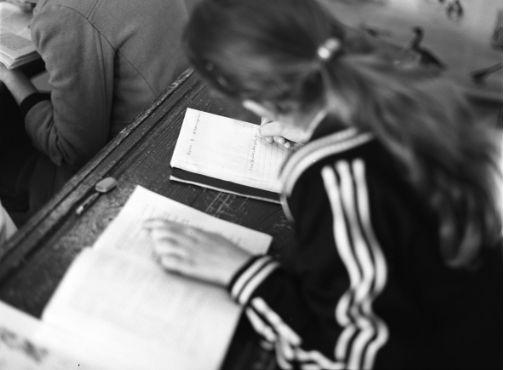
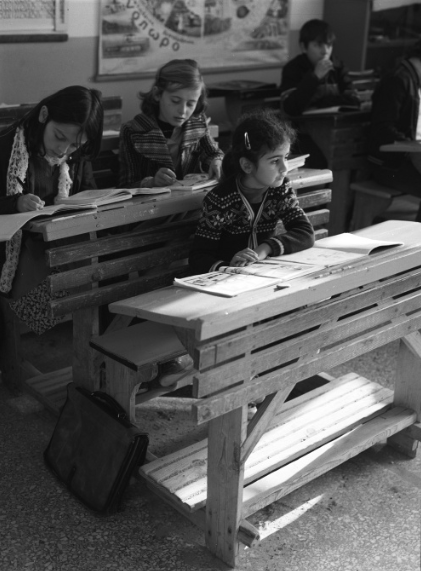
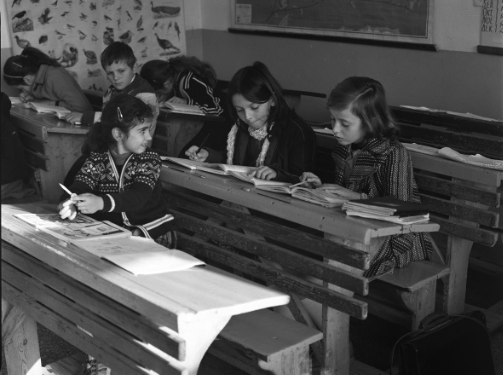
See Mahatma Gandhi’s School Days.
The wider world anticipated by didactic education today often seems decidedly old-fashioned. This kind of schooling, it would appear, is becoming less and less relevant to the needs of learners – any learners, in any part of the world. Its moral economy is fast becoming an anachronism.
Or so one would think. In fact, didactic education is far from irrelevant and by no means dead. In affluent, developed-world contexts, it often matches the self-understanding of ‘proper schooling’ of parents and older community members who went to school in an earlier era. It teaches discipline, respect, hierarchy, order, self-restraint and all manner of other traditional moral virtues. It teaches capacities that some people think are neglected today, such as memory and fastidiousness for detail. Parents who can afford it are often willing to pay a premium for schools that offer this kind of experience. And in the wider society, ‘back-to-the-future’, populist politicians promise the public that they can and will return schools to the halcyon days when ‘the basics’ were clearly spelt out and rigorously tested. However, just because these politicians seem to be the ones making the most noise does not mean that their analysis of what individuals and society need from education today is correct.
Moreover, even in the world of the New Learning, there are moments when elements of didactic education may be of some value. Or at the very least there are times when didactic pedagogy deserves some measure of our respect. Didactic education may be useful when learners are entering a new field with an established body of knowledge. It may be appropriate to certain doctrinally grounded religions, whether we agree with their mission and their messages or not. New Learning is in some senses antithetical to didactic education. However, in other senses, New Learning recognises the historical role of didactic education in the development of modern education systems, and allows that didactic education may have enduring validity in some places and at some times as one of a number of strategic approaches to education. New Learning also respects didactic education as a cultural choice in an open and pluralistic society.
